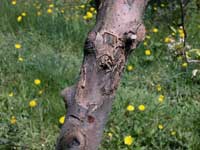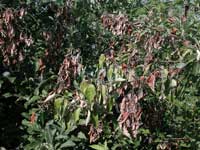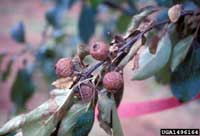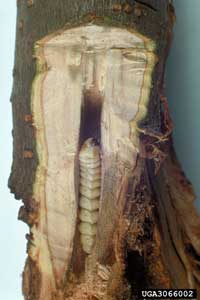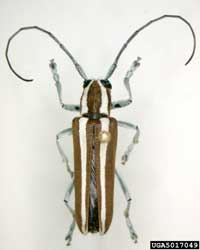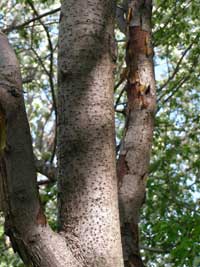Extension > Garden > Diagnose a problem > What's wrong with my plant? > Deciduous > Serviceberry > Discolored or cracked area bark
Serviceberry >Trunk/branches > Discolored or cracked area bark
1 of 3
Fire blight
Erwinia amylovora
- Infected leaves wilt, turn gray then dark brown to black
- Young shoots wilt into a shepherd's crook
- Infected blossoms first turn gray, then black
- Infected leaves and mummified fruit remain attached to the tree, often into winter
- Branch cankers have dark, sunken and cracked bark, sapwood is streaked reddish brown
- Drops of sticky honey-colored liquid can be seen on infected plant parts in warm wet weather <
- More information on fire blight
2 of 3
Roundheaded appletree borer
Saperda candida
- Dead stems and stem breakage
- Cracks or splits in bark on lower stems
- Areas of darkened bark and sap oozing from entrance hole
- Larvae have round bodies, tan to cream colored, legless, about 1 – 1 ½" long
- Adult brown with two white stripes, about ¾" long with equally long antennae
- More information on Roundheaded appletree borer
3 of 3
Blister canker
Biscogniauxia marginata
- Dead branches in the canopy
- Elongate, darkened canker on trunk or branch often centered on a crack or wound
- Reddish brown discoloration of sapwood extending up and down from crack or wound
- Round flat gray to black fungal spore producing structures up to ¼ inch across, push through bark on infected branches
- Bark often peels back in rolls on infected branches
- Most common on drought stressed, wounded trees
- More information on Blister canker



